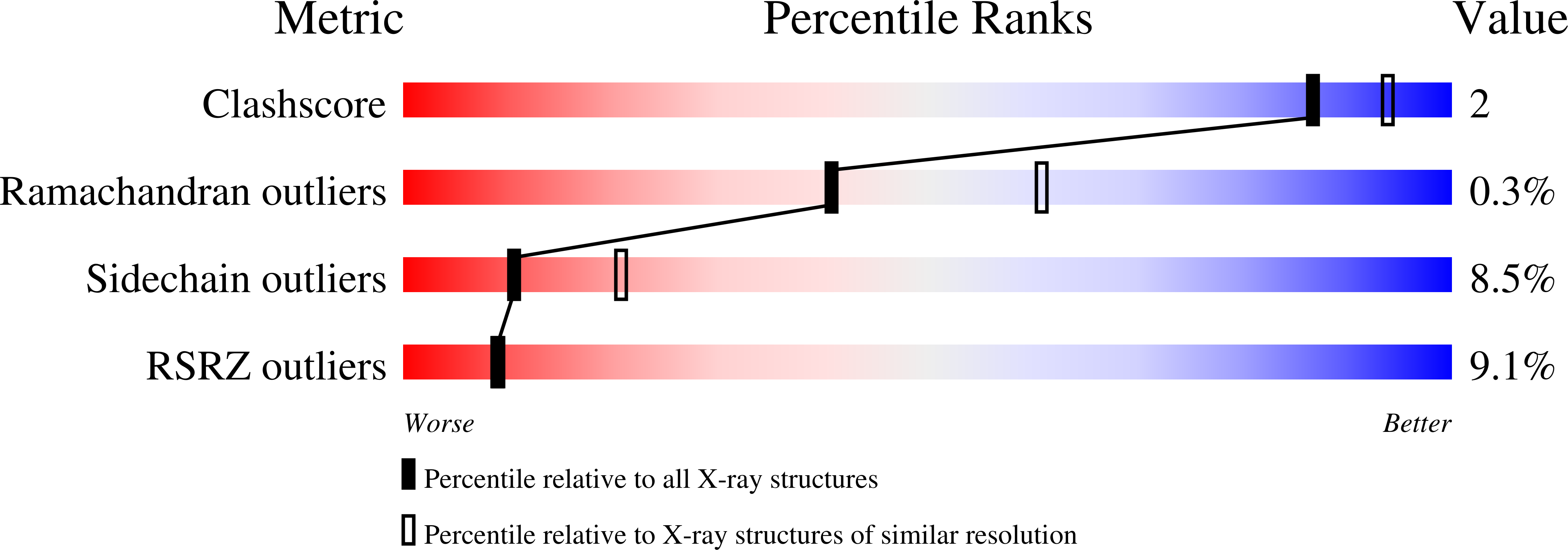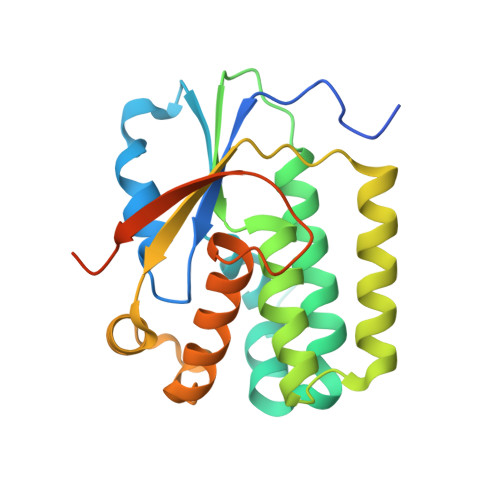Functional Studies of Active-Site Mutants from Drosophila Melanogaster Deoxyribonucleoside Kinase. Investigations of the Putative Catalytic Glutamate- Arginine Pair and of Residues Responsible for Substrate Specificity.
Egeblad-Welin, L., Sonntag, Y., Eklund, H., Munch-Petersen, B.(2007) FEBS J 274: 1542
- PubMed: 17302737
- DOI: https://doi.org/10.1111/j.1742-4658.2007.05701.x
- Primary Citation of Related Structures:
2JCS - PubMed Abstract:
The catalytic reaction mechanism and binding of substrates was investigated for the multisubstrate Drosophila melanogaster deoxyribonucleoside kinase. Mutation of E52 to D, Q and H plus mutations of R105 to K and H were performed to investigate the proposed catalytic reaction mechanism, in which E52 acts as an initiating base and R105 is thought to stabilize the transition state of the reaction. Mutant enzymes (E52D, E52H and R105H) showed a markedly decreased k(cat), while the catalytic activity of E52Q and R105K was abolished. The E52D mutant was crystallized with its feedback inhibitor dTTP. The backbone conformation remained unchanged, and coordination between D52 and the dTTP-Mg complex was observed. The observed decrease in k(cat) for E52D was most likely due to an increased distance between the catalytic carboxyl group and 5'-OH of deoxythymidine (dThd) or deoxycytidine (dCyd). Mutation of Q81 to N and Y70 to W was carried out to investigate substrate binding. The mutations primarily affected the K(m) values, whereas the k(cat) values were of the same magnitude as for the wild-type. The Y70W mutation made the enzyme lose activity towards purines and negative cooperativity towards dThd and dCyd was observed. The Q81N mutation showed a 200- and 100-fold increase in K(m), whereas k(cat) was decreased five- and twofold for dThd and dCyd, respectively, supporting a role in substrate binding. These observations give insight into the mechanisms of substrate binding and catalysis, which is important for developing novel suicide genes and drugs for use in gene therapy.
Organizational Affiliation:
Department of Science, Systems and Models, Roskilde University, DK-4000 Roskilde, Denmark.
















